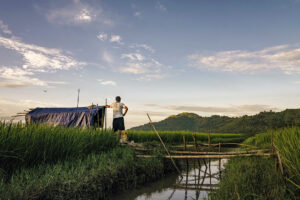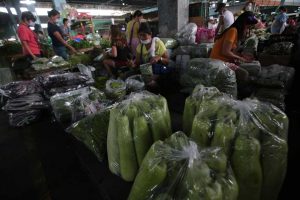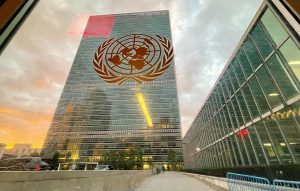An intellectual giant on Philippine agribusiness: Forecasts and recommendations

(Part 4)
As we usher in a new era in Philippine agriculture with the appointment of Francis Tiu Laurel as the next Secretary of Agriculture, to take the place of President Ferdinand Marcos, Jr. himself who kept this portfolio for the first 14 months of his Presidency, we face the stark reality that the Philippines is still far behind our ASEAN peers, i.e., Indonesia, Vietnam, Thailand, and Malaysia, in rural and agricultural development. It is clear that what the late Dr. Rolando “Rolly” Dy recommended 10 years ago fell mostly on deaf ears. Not much was done to learn from the experiences of our neighbors for one reason or another, mostly for lack of political will and a continuing absence of focus on the most important goal of food security.
For the sake of the new leadership, it would be useful to repeat what Rolly recommended about how the Philippines can learn from our more successful neighbors in the area of rural and agricultural development.
Ten years ago, in his Magisterial Lecture at the UA&P, Rolly quoted from a 2012 McKinsey Report on Indonesia that prescribed six pillars for high, sustained and inclusive growth. These were: a.) increasing small holder yield; b.) diversifying into other crops; c.) reducing food wastes and losses; d.) cultivating grasslands; e.) exploiting aquaculture potentials; and, f.) increasing commercial farm yields. Some 80% of the gains will be contributed by the first three. Given the background of the new Secretary of Agriculture, who has headed one of the largest fishing ventures in the southeast region, there should be hope that under this present Administration, we will see a quantum leap in the production and productivity of the fisheries sector.
As mentioned in a former article in this series, despite the constant reference to the primordial importance of land consolidation in such crops as coconut, cacao, coffee, palm oil and a few other products susceptible to large-scale production like bananas and pineapples, a large portion of our arable lands will always be devoted to small holder cultivation, especially in rice, corn, and vegetables and other high-value crops. This should be the focus of the Government’s efforts to improve agricultural productivity, especially in providing the small farmers with farm-to-market roads, irrigation systems, subsidized farm inputs such as fertilizers and insecticides, and access to credit. As regards rice, it would be wise for the Government to listen to the expert advice of people in the private business sector on how to address the ongoing rice crisis. Special attention should be given to the advice contained in a column of former Secretary of Finance Gary Teves, who is now very much involved in the private sector as a member of the board of one of the largest food and beverage conglomerates in the country, San Miguel Corp.
In a column in a leading daily, Gary Teves outlined the following short- and long-term solutions to the ongoing crisis in which rice prices have skyrocketed:
1.) Encourage greater private sector participation in the rice supply chain, particularly conglomerates who can help enhance the efficiency of the rice distribution system essential to combat disruptions that drive up rice prices.
2.) Closer collaboration between government agencies. He gives the following examples: the Department of Agriculture (DA) and the National Food Authority should work together to develop a rice procurement and distribution plan, specifically addressed to the current crisis. This plan should ensure that farmers get a fair price for their produce and that consumers can buy affordable rice. The DA and the Department of Trade and Industry can also develop a rice market development plan that connects farmers with buyers. In this regard, May-ani, a digital and social enterprise has been helping small farmers get better prices for their products by providing them, through their smart phones, with information on the retail prices of their products on a daily basis. There should be more social enterprises that will help digitalize small-scale agriculture.
3.) Develop more agriculturists who can upskill small farmers in the use of technology to improve their productivity. Here, the concept of “master gardeners” developed in the United States should be adopted by TESDA (Technical Education and Skills Development Authority)-type of schools in the Philippines.
4.) At the local government level, promote a co-financing mechanism that incentivizes local government units (LGUs) to provide more funding to rice programs. Proceeds from the so-called Mandanas-Garcia ruling should be utilized in these financing initiatives.
5.) Continue implementing the rice tariffication law (RTL) which helps to offset domestic shortages and to stabilize prices.
Among the more long-term measures proposed by Gary are the amending of the Comprehensive Agrarian Reform Law which can promote efficient land use, increased productivity through modernized farming practices, crop diversification, economies of scale through consolidated farms, improved rural infrastructures, better access to credit, market regulation and comprehensive support for smallholder farmers.
Continuing with what Rolly wrote about learning from our neighbors, he cited a report from the Japan International Cooperation Agency, or JICA, which indicated that Indonesia would enjoy a substantial expansion of tree crops, particularly rubber, coffee, cocoa, and palm oil, driven mainly by foreign and private investment using modern technology and management. In fact, this happened mainly in the oil palm sector when Malaysia, the former global leader in the production of palm oil, ran out of workers, leading to a substantial increase of Malaysian investment in the oil palm industry of Indonesia. This most populous country in the ASEAN, with the largest land area, soon became the biggest producer in the world of palm oil.
In recent times, however, the largest buyers of palm oil — such as Unilever, Procter and Gamble, and Nestlé — have stopped importing palm oil from Indonesia when they realized that virgin forests were being cut down to make way for oil palm plantations. This has led some of the investors in oil palm plantations to take a closer look at the Philippines since, in the words of one of them, our country has already denuded most of our forests. In fact, there are now some Philippine conglomerates investing in planting oil palm on denuded public lands under the jurisdiction of Department of Environment and Natural Resources (DENR), especially in the islands of Mindanao and Negros. Among them is the leading conglomerate DMCI Holdings.
In the same JICA Report, it was mentioned that the Philippines would retain global leadership in the coconut sector, but with increasing reliance on “new” coconut products both for the domestic and export markets. This forecast made 10 years ago was only partially accurate. Indeed, the coconut sector is increasingly diversifying into higher-value food exports like coconut water, coconut milk, coconut sugar, and virgin coconut oil or VCO. Unfortunately, though, the Philippines has been surpassed in the volume of coconut production by both India and Indonesia.
Another forecast made 10 years ago by JICA that did not materialize was that the Philippines would retain a slightly smaller but highly competitive sugar industry. At present, the Philippine sugar industry is facing a crisis of high costs of production, a shortage of farm workers, and a lack of long-term capital. Some of the large sugar mills on the island of Luzon have closed and are in the process of relocation to less urbanized areas where the prices of real estate are much lower than they are in such provinces as Batangas, Pampanga, and Tarlac. As in the coconut industry, the only hope for a “highly competitive sugar industry” that JICA envisioned 10 years ago is the reconsolidation of small sugar farms, especially in the island of Negros, that were fragmented under an ill-advised agrarian reform program when applied to the sugar industry.
Even Taiwan, that was in East Asia considered the gold standard in land reform, was fortunate to have leaders during the time of Chang Kai Sek who had enough common sense to exempt the sugar industry from land fragmentation.
(To be continued.)
Bernardo M. Villegas has a Ph.D. in Economics from Harvard, is professor emeritus at the University of Asia and the Pacific, and a visiting professor at the IESE Business School in Barcelona, Spain. He was a member of the 1986 Constitutional Commission.




